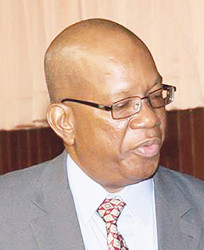Guyana’s total public debt at the end of December 2015 was $317.7b and the APNU+AFC government will in 2017 be working to modernize the consolidated Debt Management Act as part of efforts to improve the capacity to manage debt.
This is according to the 2015 Annual Public Debt Report, which Minister of Finance Winston Jordan laid in the National Assembly yesterday. The report, which is the first of its kind, was hailed by Jordan as a demonstration of “the deserved and prominent place which debt-related issues have been given in the government’s strategic agenda for the development of Guyana.”
In presenting the report to the National Assembly, Jordan noted that government is committed to continuing to invest in a consistent capacity building plan to develop the skill-set necessary in understanding public debt management, and implementing a comprehensive debt strategy.
He explained that “there are at least six (6) main areas where Guyana hopes to improve its debt management capacity: institutional and legal frameworks, debt strategy formulation, self-assessment, operational risk management and debt negotiations.”

The report notes that Guyana owed $317.7 billion in public debt as of December 31, 2015, which was the lowest level in the preceding five years. It presented an overview of debt developments during the five-year period (2011 to 2015) and states that for the fiscal year 2014/2015, Guyana’s total debt as a percentage of Gross Domestic Product (GDP) has declined from 51.9 % at the end of 2014 to 48.6 percent of GDP at the end of 2015.
Of that sum total external debt accounts for $236 billion or 74.3%, while domestic debt represents $81.7 billion.
The $317.7 billion also reflects a decrease of 3.6 percent compared to its 2014 level. According to Jordan, this decrease, which was largely due to repayments of the oil debt under the Guyana-Venezuela Rice Trade Arrangement, now sees Guyana’s debt profile continuing to remain stable and sustainable over the medium-term.
He explained that Guyana is now faced with the challenge of maintaining debt sustainability in a volatile and uncertain global economy.
“In 2015, Guyana’s economy, perhaps for the first time in recent history, found itself in a precarious situation where most of the country’s key agricultural commodities, including sugar, rice, and forestry, faced headwinds. The slowdown in the global economy, combined with the loss of preferential markets, negatively affected demand for these produce.
Even remittances, on which so many of our people depend, were a victim of the slowdown in the world economy. It is obvious that our excessive reliance on these sources of foreign exchange will continue to expose the economy to volatile external developments, and make us more susceptible to external shocks,” the minister argued.
He added that a recent Debt Sustainability Analysis indicates that Guyana will remain vulnerable to external shocks with commodity price fluctuations having added to the volatility of our export earnings and tax revenues, and having also affected the financial performance of state-owned agricultural enterprises.
Additionally, the minister noted borrowing has also become more uncertain, with the recent increases in Guyana’s income. These increases have seen Guyana being classified as a lower middle-income country by the World Bank as a consequence there has been a reduction in the availability of concessional funding since these “softer terms” are generally confined to low-income countries an income-classification for which Guyana no longer qualifies.
To access affordable financing, the minister explained “Guyana has sought alternative funding sources, especially from our South-South partners such as EXIM Bank of China, EXIM Bank of India, the Mexican Agency for International Cooperation and Development, and the Islamic Development Bank.
At the same time, the country has maintained close ties with the multilateral agencies, including the World Bank, Inter-American Development Bank (IDB) and Caribbean Development Bank (CDB), and more traditional western bilateral donors.”
These developments, which have made Guyana’s debt portfolio and the risks associated with it more complex, have Jordan argued necessitated a policy imperative for the strengthening of the institutional framework for public debt management including establishing a sound and modernized legal framework for debt management.




